Understanding common UK road signs
When driving on the roads in the UK, it is important to understand the Highway Code road signs to ensure the safety of yourself and other drivers, and to make sure you’re not breaking the law. Our guide to UK road signs covers some of the most common Highway Code signs and their meanings, so you know what you need to be looking out for on the roads.
30 second car valuation
Road sign shapes
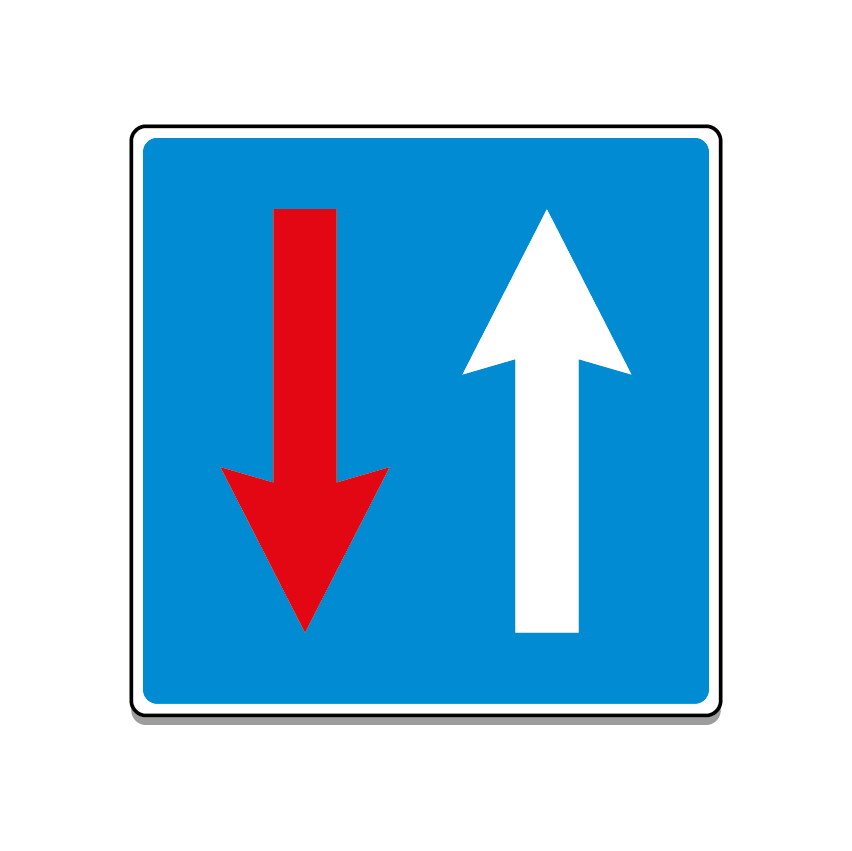
Rectangular road signs
Rectangular signs are mostly used to give information and inform road users. On motorways, blue rectangular signs are used to give directions. On A and B roads, you will see green rectangular road signs, whilst you may see white rectangular signs to inform about parking zones and on smaller roads. Bus lane, cycle lane and speed camera signs are also rectangular.
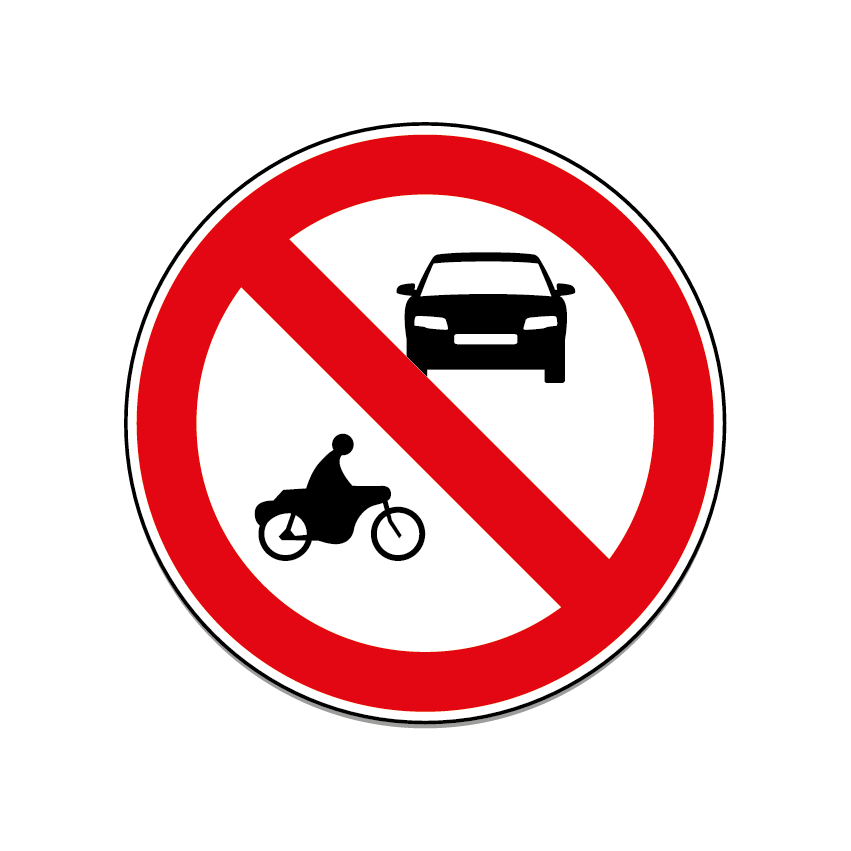
Circular road signs
Circular road signs give orders to road users and must be followed - failing to do so is breaking the law. Circular signs with a red border instruct road users to do something, such as a speed limit. Blue circles are used for instructions, such as a left turn is coming up ahead.
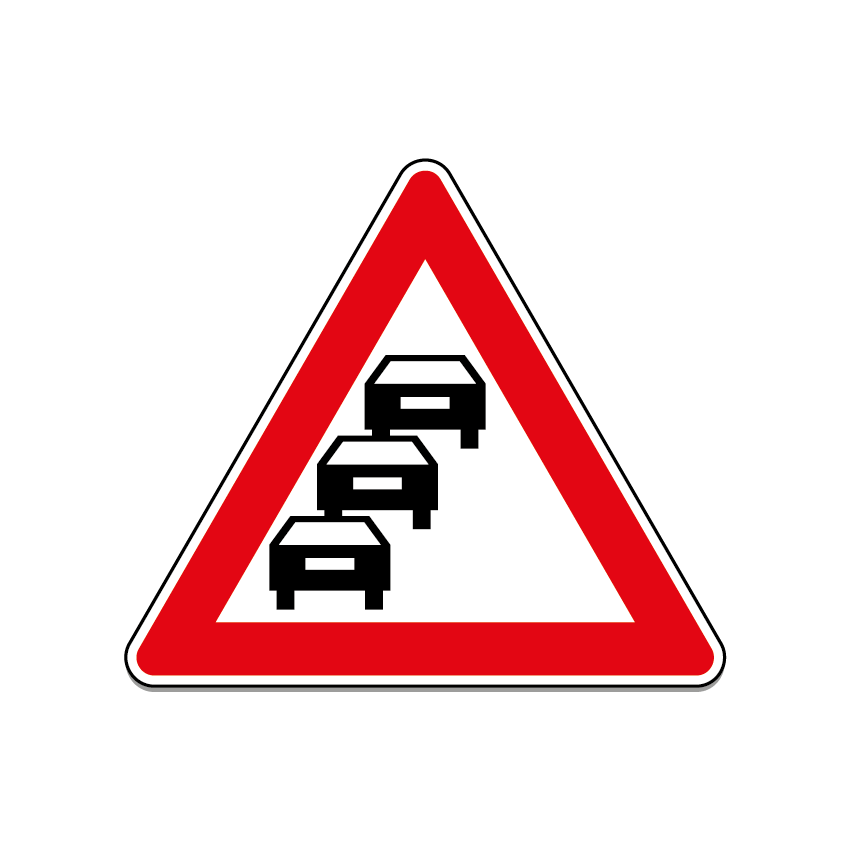
Triangular road signs
Triangular road signs are used to warn road users of something that is coming up ahead, such as a T-junction or a sharp bend. Almost all triangular road signs have a red border.
Common UK road signs
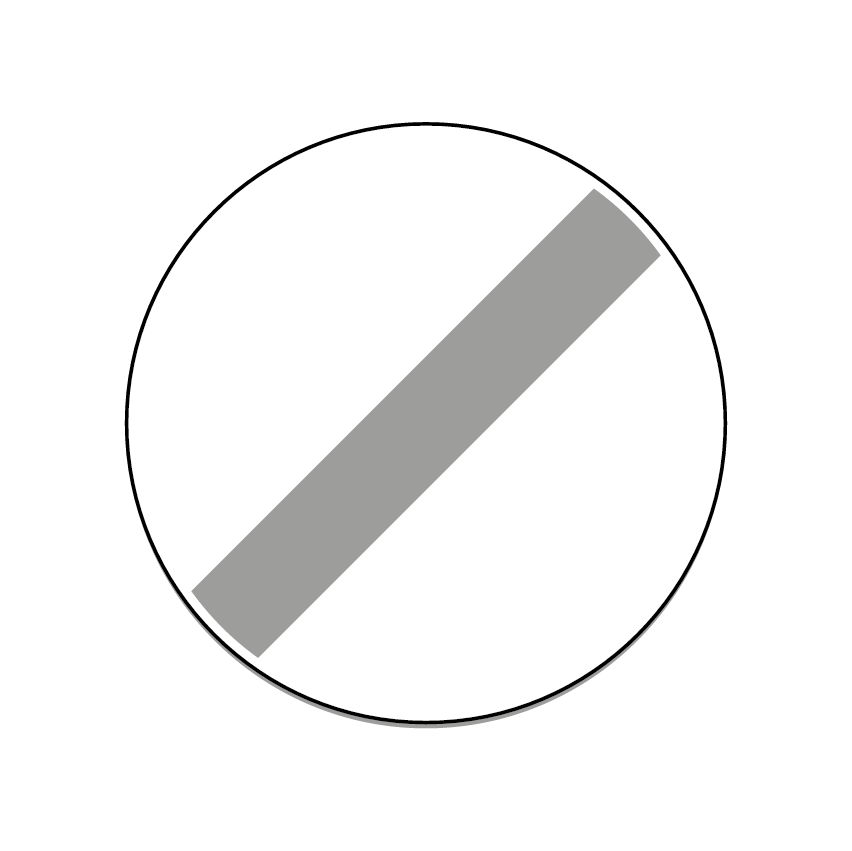
‘National speed limit’ sign
One of the most common UK speed limits signs, the national speed limit sign is a white circular sign with a diagonal black stripe going from right to left. The speed you can travel on a national speed limit road will vary depending on the type of road. If you are on a dual carriageway in a car or motorbike, the national speed limit is 70mph, whereas if you’re on a single carriageway road it’s 60mph.
The speed limit also varies if you are towing a trailer or caravan, where you must travel 10mph slower than if you weren’t towing. For other types of vehicles, you should refer to the Government’s guide to speed limits.

‘No motor vehicles’ sign
The no motor vehicles sign is a white circular sign containing a motorcycle and car inside a red border. Where you see this sign, it means that no motor vehicle can be driven down the road and that it is likely to be reserved for pedestrians or cyclists.

‘Give way to oncoming vehicles’ sign
The give way sign is one of the most common in the UK - it's a circle with a red border that contains two arrows - red pointing upwards and black downwards. It is used to warn road users that the traffic at the junction ahead have priority.
The reason the triangle is upside down and other triangular road signs are not is so it can still be recognised by road users if it is defaced, such as when it snows or becomes dirty.

‘No stopping’ sign
The no stopping sign is a blue circular sign with a red border and cross. You are not allowed to stop even for a short amount of time to pick up passengers or take a phone call where the sign is visible. In certain cases, the sign is accompanied by a sign that shows the times of day the no stopping rule is enforced, such as on major roads that become busy at peak times.

‘Priority over oncoming vehicles’ sign
The priority over oncoming vehicles sign is a rectangular blue sign featuring a large white arrow and a smaller red arrow. This indicates that you have priority over vehicles travelling in the opposite direction and is often seen where there is a narrow section of road, or during road works where there is only enough room for one vehicle to pass. The law indicates that if there is already a vehicle travelling in the narrow area, you should wait for them to pass before progressing.

‘Queues likely’ sign
The queues likely sign is a white triangular sign with a row of three cars and a red border. It is often accompanied by a white rectangular sign below with a black border and queues likely text within.
The sign indicates that there is an area ahead that often experiences congestion and to approach with caution. It is important to not brake suddenly in these situations, so you should attempt to slow down gradually in preparation of traffic that isn’t immediately visible.
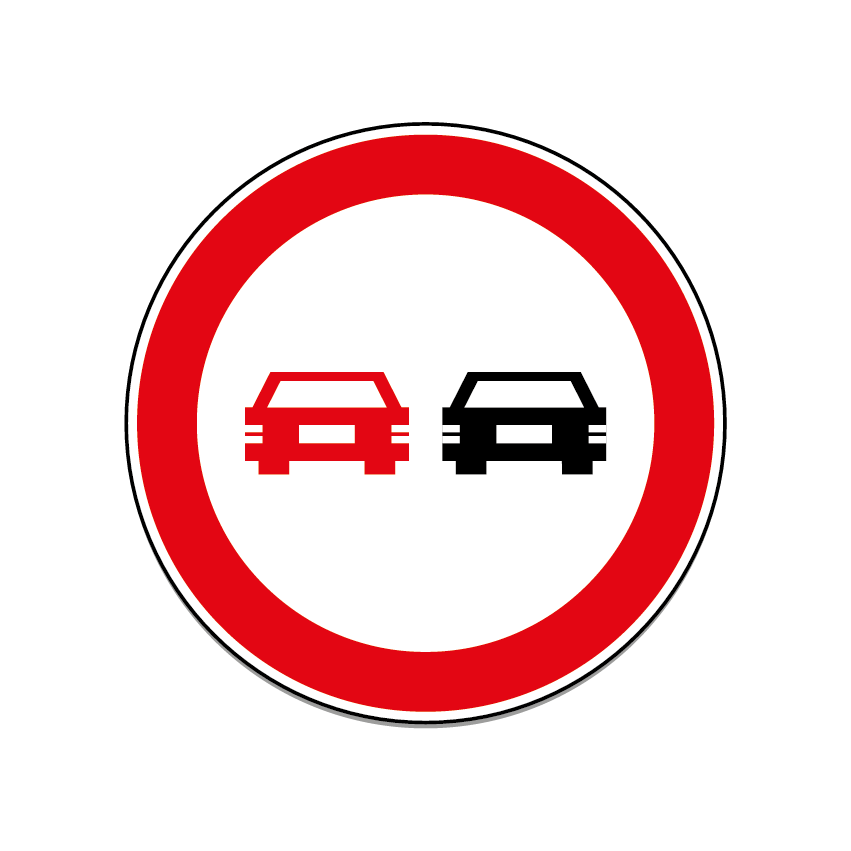
‘No-overtaking’ sign
A no-overtaking sign is a white circular sign featuring a black car on the left and red car on the right, with a red border. It instructs drivers that it is not safe to overtake the vehicle in front and is often placed where there is poor visibility of the road ahead, or the road is too narrow to attempt an overtake.
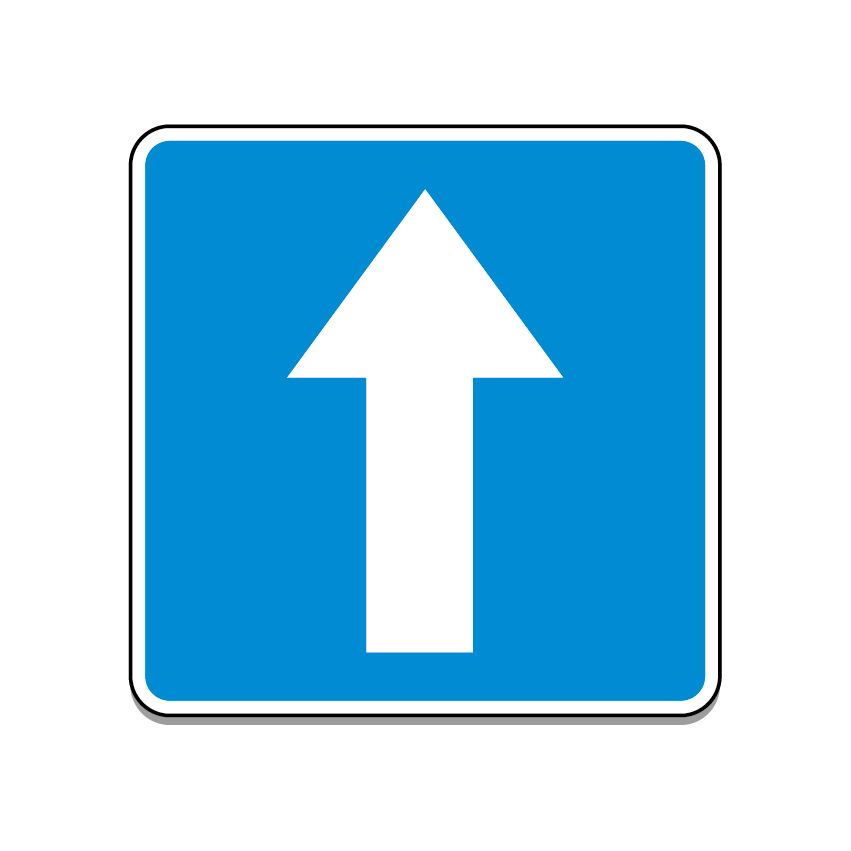
‘One-way traffic’ sign
If you see a blue rectangular sign with a forward-pointing arrow, it means that the road is only accessible for traffic travelling in one direction. Travelling in the wrong direction could result in a head-on collision with another vehicle.
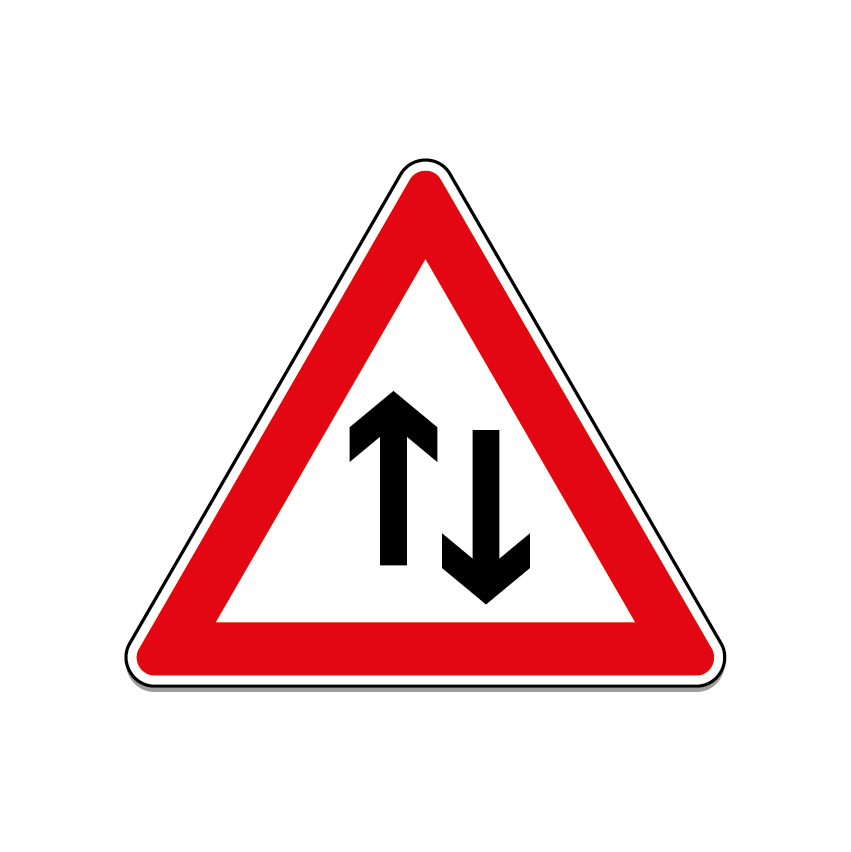
‘Two-way traffic’ sign
The two-way traffic sign is a triangular sign with two black arrows of the same length pointing in opposite directions, with a red border. The most likely scenario where you will see this road sign is when you’re exiting a one-way road and entering a two-way road.
When you see this sign, you should stick to the left-hand side of the road to avoid oncoming traffic when the type of road changes. Where the arrows are horizontal rather than vertical, you will need to turn left or right to join the two-way road.
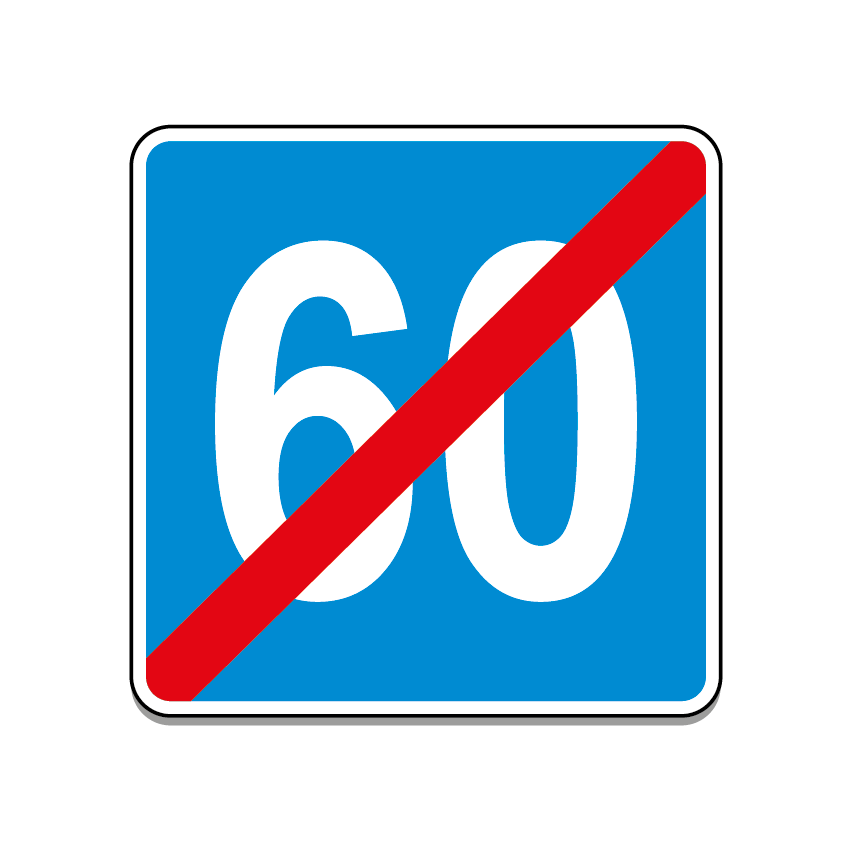
‘Minimum speed limit sign’ sign
If you see a circular blue sign with a white number in the middle, you are entering a zone with a minimum speed limit. These are one of the less common signs in the UK but are used on some roads that need a constant flow of traffic, such as the Mersey Tunnel. You may also see minimum speed limit signs where there are roadworks.
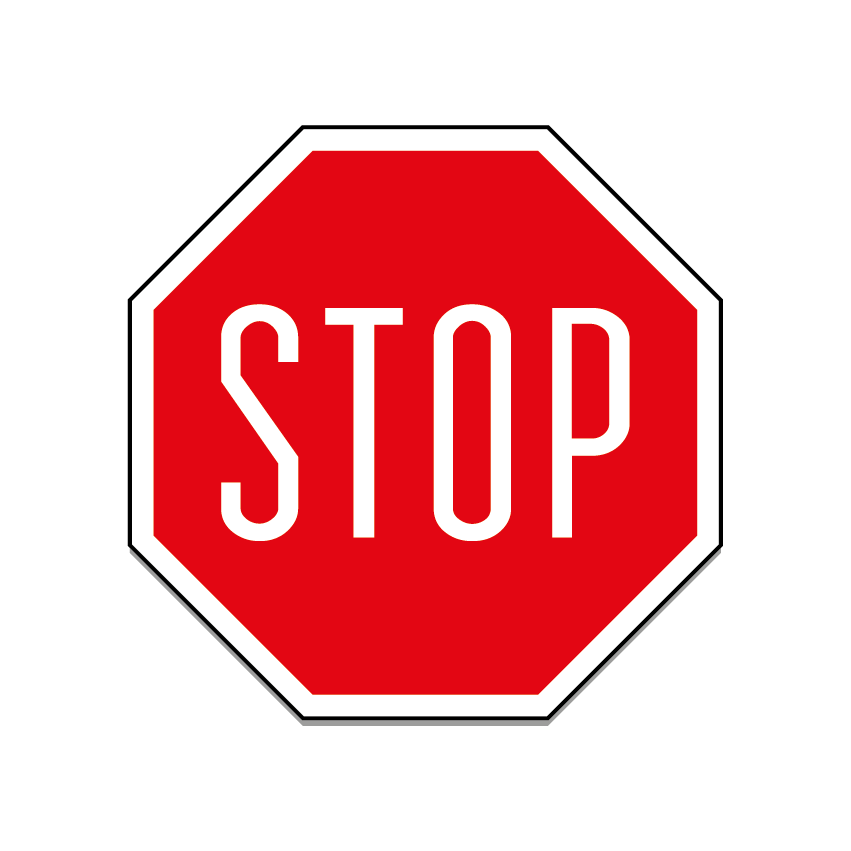
‘Stop’ sign
The stop sign is a red octagon shape with the word ‘STOP’ in white lettering in the middle of the sign. The regulatory sign is a unique shape to stand out and ensure motorists come to a complete stop before an intersection. At a stop sign, you must come to a halt to ensure the intersection is clear of other road users before progressing.
Frequently asked questions
There are hundreds of different road signs, each with their own meaning. However, most fall into one of three categories based on their shape: circular, triangular, or rectangular. You can use our guide above to learn what each individual road sign means.
Circular signs give orders – you must follow them to comply with UK road law. Circles with a red border tell you what you must not do, such as taking a U-Turn. Blue circles usually give a positive instruction; ‘turn left ahead’, for example.
Triangular signs warn. Road signs in the shape of an equilateral triangle warn you about the road layout or any hazards that lie ahead, such as sharp bends. These signs almost always have a red border.
Rectangular signs inform. Blue rectangular signs provide information on motorways, green signs direct you on primary roads, and white signs give directions on minor roads. Rectangular signs can also indicate congestion charge zones and bus lanes.






